
“It is impossible to meet a penguin and continue feeling angry about something.” Anonymous.
Penguin facts are fascinating and descriptive of an unusual creature found in several areas of the world including Australia, New Zealand, South Africa and Antarctica.
Although penguins swim through water with the gracefulness of fish but possess vestigial wings, essentially used as flippers, they are considered “flightless” birds and something of an evolutionary oddity.
In fact, when penguins swim in the ocean, they resemble birds in flight.
On land, penguins walk with a waddle or flop down on their stomachs to slide across snow and ice.
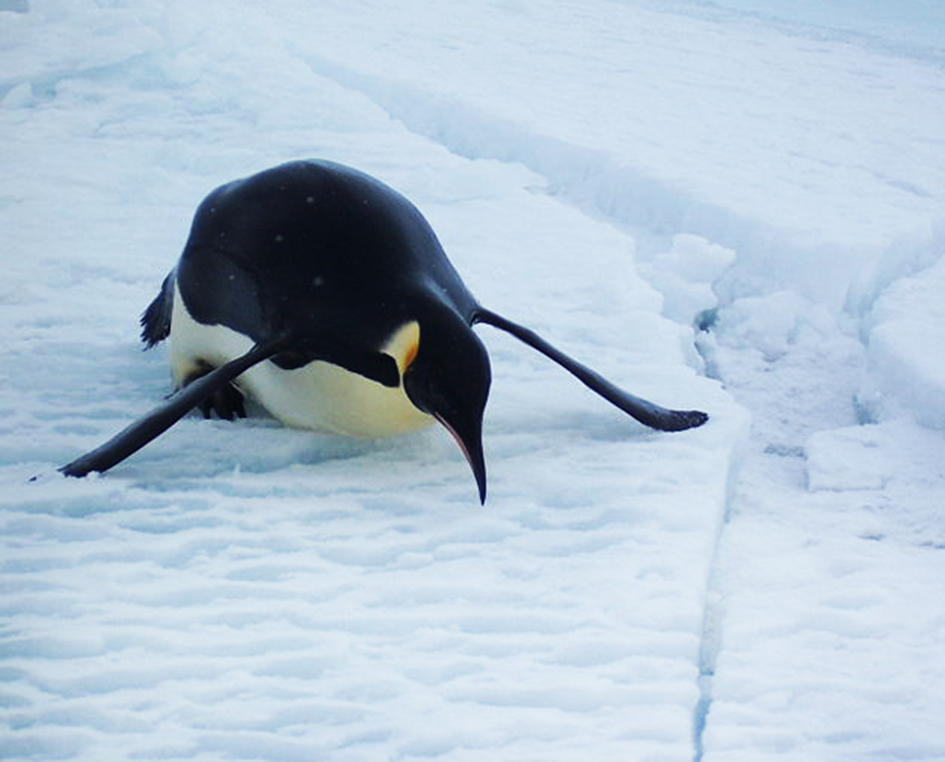
Zoologists have termed this penguin-specific action “tobogganing”, a method of traveling used by penguins, which prevents energy loss when navigating over large areas.
Among interesting penguin facts are the way they can jump using both feet simultaneously when they need to maneuver across rough terrain.
Evolution of the Flightless Birds
Ancestors of today’s types of penguins DID fly at one time but eventually lost that ability due to climate change, depending on the ocean for food and lack of land predators.

Penguins are essentially flightless birds that have retained their “wings” as flippers, which now propel them through the water instead of the air.
Penguin fossils are scarce, making an accurate timeline of their evolutionary history somewhat problematic.
Fossils discovered depicting an ancient flightless penguin species call the Waimanu lived around 60 million years ago in New Zealand.
More Facts of a Penguin
Penguins are not mammals.
When reading about penguins, you might be surprised to learn that penguins are not mammals – simply because birds are not mammals.
Although penguins appear and act “mammal-like”, a bird ancestry and egg-laying capability prevents them from being included in the mammal group.
Unless viewed up close, the thick layer of feathers covering a penguin’s body simply looks like a fur pelt.
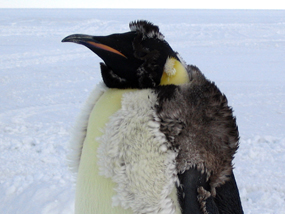
Additional penguin facts explain how penguins that live in the Antarctica are ideally constructed to withstand such a freezing climate.
Beneath the exterior layer of dense feathers is another insulating layer of downy feathers that helps to retain body heat.
Additionally, penguins possess body fat resembling whale blubber, which also provides even more insulation against below-zero blizzard winds and snow.
Fun Facts about Penguin
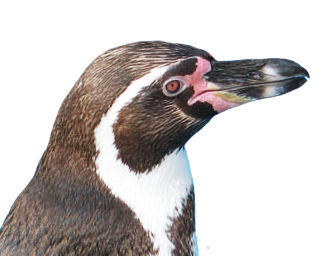
Thick layers of feathers insulate penguins against cold air and water. insulate penguins against cold air and water.

In extremely frigid temperatures, penguins huddle together to retain heat and allow each penguin to take turns moving to the center of the group where it is warmest.

If a mother penguin loses a chick, they may try to steal someone else’s baby penguin.

Males will place eggs on top of their feet and keep them warm with their belly flap.

Penguins communicate with each other using a sort of sign language involving the head and flippers.

Only 18 penguin species are recognized in the world.

Penguin eyesight evolved to detect creatures inhabiting the ocean. For example, fish and squid move differently than land animals so the area of the penguin brain involved in motion detection is more sensitive to the swimming, undulating movements of ocean life. If they were to “see” a fish or shrimp on land flopping about in a different manner, they might not recognize it because it is not activating that special part of their brain

A type of penguin called the fairy penguin weighs about two pounds.

The rarest penguin is the yellow-eyed penguin, which lives on the southeast coast of New Zealand. Zoologists think only 5000 of these penguins are left.

Most penguins can live a natural life of up to 20 years, but also live well in captivity.

A penguin will spend around 75% of its life in the water.

Some penguin species have over 300 feathers per square inch all over their body.

Penguins get rid of excess body heat by “blushing” as humans do, which causes blood to move towards the surface of the • Penguins eat and swim as they hunt their prey in the water, scooping up fish and other creatures with their beaks before swallowing them whole.
Different Types of Penguins
There are today 6 subfamilies of penguins, divided into 18-20 species of penguins.
You can find all these in a list here on Wikipedia.
Here on this page I will go into the sub-species
Emperor penguins
The African penguin
The Galapagos penguin
The Fairy penguin (The Blue Penguin)
Humboldt penguins
Magellanic penguins
Rockhopper penguins
You can find a lot of great penguin photos, free for you to use, on the page Penguin Pictures. You will find pictures of the different kinds of penguins named on this page, as well as pictures of the Yellow Eyed Penguin from New Zeeland, the Sander Penguin, the Macaroni Penguin, Gentoo Penguins, Chinstrap penguins and Royal penguins.
You can also find Penguin clipart on this page.
Emperor Penguin Facts
Emperor penguins are the most recognized penguins due to their unique coloring of orange patches on ears, black feathers on their heads, bluish gray necks and yellow chests.
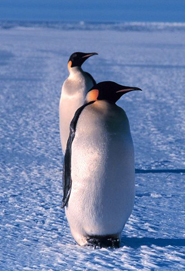
Of two penguin species living on the continent of Antarctica, the Adelie penguins and the Emperor penguins, the latter is the largest of all penguins, with average heights of 45 to 48 inches and average weights of 50 to 100 pounds.
Female and male Emperor penguins look alike except when male penguins take over responsibility for the egg incubation when the female heads to the sea to find food.
Males can lose up to half their weight during this time, since they must stay with the egg and cannot eat.
The answer to the question of what do penguins eat depends on where the penguin lives. For these Antarctic penguins that live alongside the Antarctic Ocean, a diet of crustaceans, fish, particularly the Antarctic silverfish and smaller cephalopods, mostly squid, is normal fare for them.
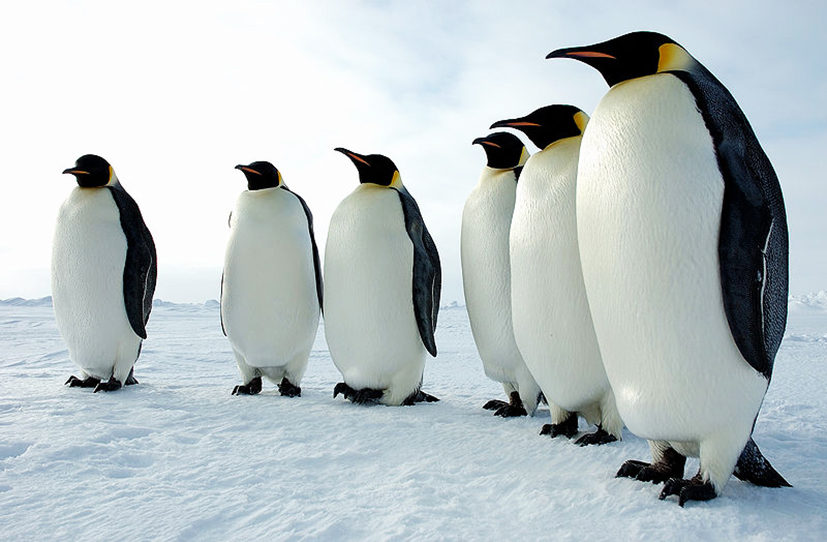
When searching for food, Emperor penguins swim in the ocean or investigate cracks in the tidal ice, able to stay underwater for up to 20 minutes. However, most of an Emperor penguin’s dives last about four to five minutes before coming up for air.
Other Facts about the Emperor Penguin include:

Females lay one egg because one egg is all their feet will accommodate to keep the egg off the cold ice.

Breeding occurs during the perpetual darkness falling over the Antarctic winter months

Male Emperor penguins sleep most of the time while they are incubating the egg and the female is feeding in the northern waters

Penguin parents identify a baby penguin by its unique call, which is audible for up to 1000 yards away.

Emperor penguins begin breeding once they turn four years old.
African Penguin Facts
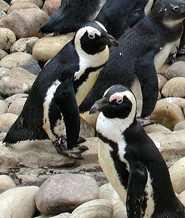
Bearing white feathers on their lower bodies and black feathers above, along with a black chin and a thin black stripe across their chests, the African penguin population is thought to be around 140,000.
In 1900, the population was estimated at over one million. This decline is a direct result of humans using its eggs for food and extreme habitat destruction.
African Penguin Fun Fact
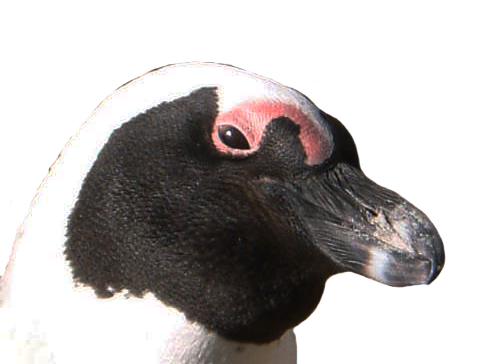
The males with their slightly larger bills and stockier build are barely distinguishable from females.

African penguins primarily eat anchovies, sardines, herrings, crustaceans and squid.

They can swim up to 15 miles an hour underwater when hunting for food in the ocean.

As monogamous birds, African penguins generally breed for life, with zoologists observing up to 85% of pairs staying together for ten years or more.

Because penguins are adapted to inhabit cooler environments, these penguins have adjusted to a warmer climate by utilizing energy for breeding and feeding only during morning and evening periods.

African penguins also remain with their back to the sun in order to prevent overheating of flippers, feet and face.

They have also been known to pant when feeling too warm, a process called evaporative cooling, which effectively lowers body temperature.

Unlike Emperor penguins, African penguins are more nervous around humans so visitor activities around these penguins are strictly regulated.

The life span is from 10 to nearly 30 years.

The penguins fall victim to predators, including cape fur seals, orcas, sharks, mongooses and kelp gulls.

Female African penguins lay two eggs

During the molting process, African penguins are unable to hunt for food in the water and must fast during this time, which usually lasts 20 days
Facts about the Galapagos Penguin
This penguin is the only penguin species living north of the equator, on the Galapagos Islands.
They have black heads, grayish-black chests and shoulders, and white under parts. Immediately recognizable by two black bands running across their breast feathers, Galapagos penguins are the third smallest of all types of penguins.
Food foraging occurs during the day, with sardines, crustaceans and mullet predominantly comprising their diet.
With temperatures ranging from 55 degrees Fahrenheit to nearly 80 degrees, Galapagos penguins sometimes stay cool by panting, as well as leaning forward to prevent the sun from burning their feet.
With a population of only about 1500 penguins, Galapagos penguins are endangered and considered the rarest of all penguin species.
Factors such as fishing, oil pollution, climate change and an increase in predators have all contributed to a reduction in population.
Hawks, snakes, owls, sea lions, seals and even feral cats hunt these vulnerable penguins, taking advantage of the Galapagos penguins’ small size on land as well as in water.
Find more information about the Galapagos Penguin here.
Fairy Penguin Facts
Also called the Little or Blue Penguin, the Fairy penguin lives in New Zealand and Australia and is one of the few penguin species not considered endangered, with an estimated population of around one million.
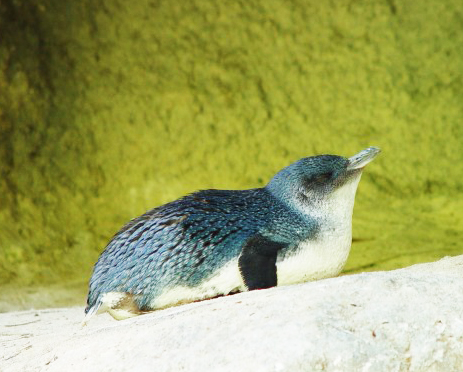
Discovered in 1781, the Fairy penguin attains a height of around 13 inches and weighs an average of three pounds.
Its head and shoulders are blue and its belly is white. Flippers are blue as well.
While the Fairy penguins have an average lifespan of seven years, zoologists have documented a few cases of Fairy penguins living 25 years in captivity where they are safe from predators.
Female lay two eggs at once time, with one egg hatching two days after the initial hatching of the first egg.
Interesting little blue penguin facts include its use as the official Linux mascot Tux.
While visiting Australia, Linus Torvalds, the creator of the Linux operating system, was supposedly bitten by a Fairy penguin. This unfortunate incident inspired him to invent Tux as a Linux marketing symbol.
Additionally, a few distributions of the Linux operating system features Tux the Little Penguin greeting users while the computer is booting.
Tux the Fairy penguin is also seen as a character in the video game SuperTux.
You can find more facts about this cute little penguin on https://en.wikipedia.org/wiki/Little_penguin
Humboldt Penguin Facts
Found in Northern Chile and Peru, Humboldt penguins are currently suffering seriousreductions in populations due to over-trapping of Humboldt penguin predators, which cause the unfortunate penguins to become trapped in fishing nets along with their predators.
Additionally, pollution and oil spills are also contributing to this penguin’s rapid population decline.
Penguin facts concerning the Humboldt penguin includes its average height is 27 inches and weight about eight pounds. They have reddish-brown eyes and a thick white stripe across their throats.
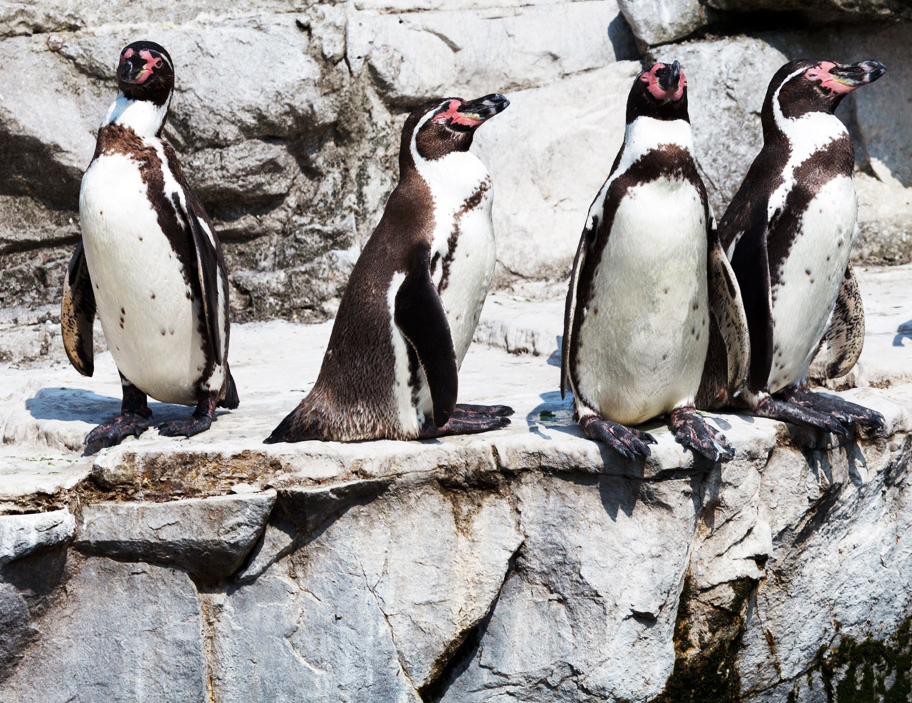
Eggs are laid two at a time in rocky crevices or burrows, with both male and female Humboldt penguins taking turns incubating the eggs.
Birth occurs about 40 days after the eggs have been laid.
Eggs are frequently destroyed due to nest flooding, nest desertion, breakage of the eggs and gulls snatching them from nests.
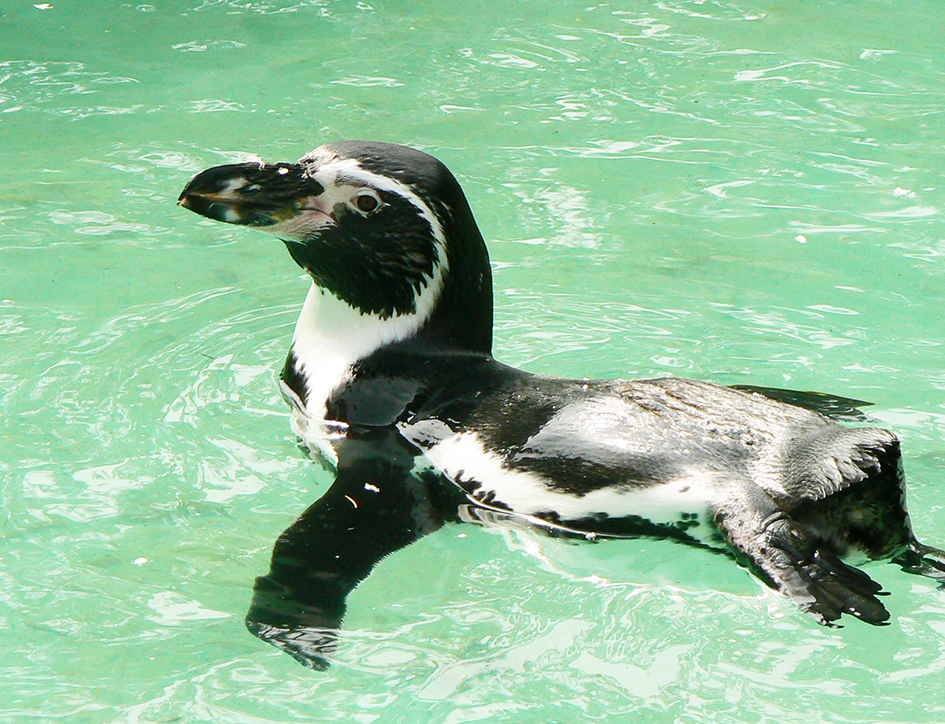
Humboldt penguins often live for up to 30 years in captivity, when not threatened by natural predators such as vultures, foxes, wild dogs, cetaceans and sea gulls.
Magellanic Penguin Facts
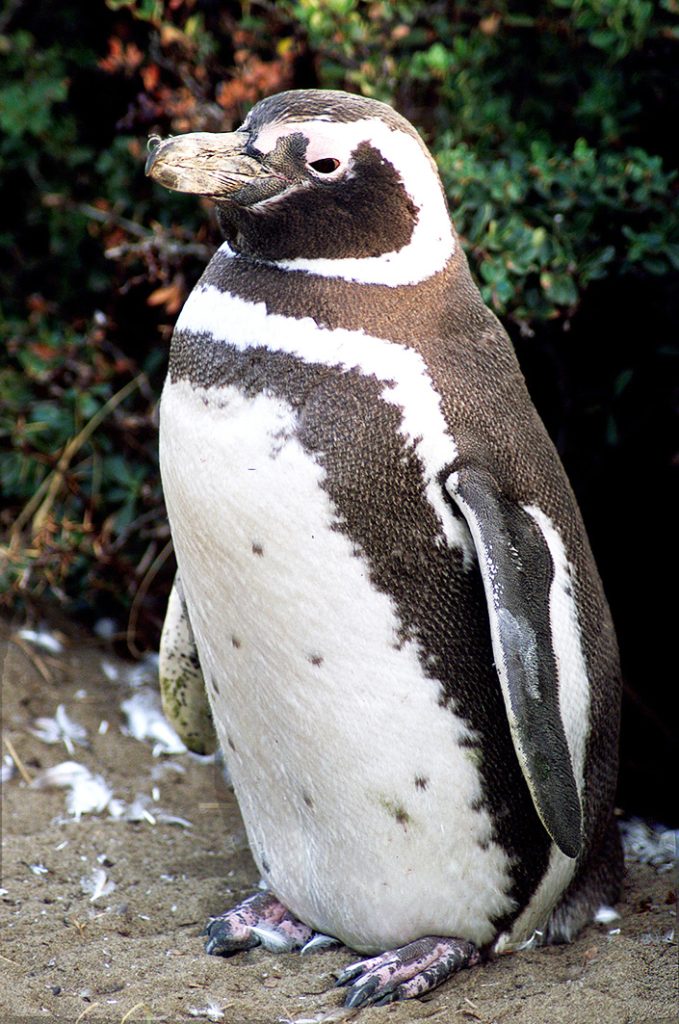
Discovered by none other than the explorer Ferdinand Magellan while on one of his voyages to South America in the early 1500s, the Magellanic penguins call Chile, the Falkland Islands and Argentina their home, with some migrating as far as Brazil for breeding purposes.
Closely related to the Humboldt, Galapagos and African penguins, the Magellanic penguin averages around 27 inches in height when full grown and eats a typical penguin’s standard fare of fish, krill, shrimp and squid.
Magellanic Penguin Fun Facts
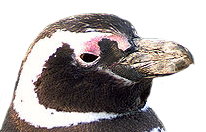
In warm climate, Magellanic penguins shed the feathers surrounding their eyes.

Due to possessing a dense layer of feathers, these penguins can float like ducks in the water.

Magellanic penguins hunt in groups rather than individually.

When chicks are only three months old, they are able to hunt and swim independently.

These penguins are “threatened” because of oil spills and reduction of fish populations due to climate changes.
Facts about the Rockhopper Penguin
You will find Rockhopper penguins doing exactly what their name suggests, hopping over rocks along the island shores of northern Antarctica, as well as from New Zealand to Chili. Averaging only 20 inches tall, Rockhoppers bound over the uneven terrain rather than waddle like their penguin cousins.
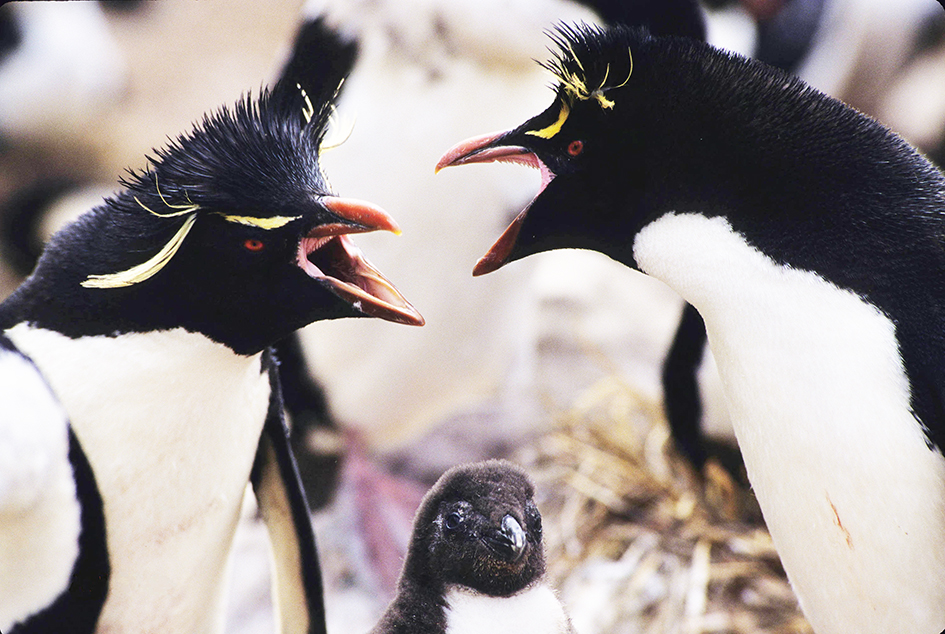
Colorful and gregarious, these penguins have pink, webbed feet, red eyes and orange-red beaks.
Rockhopper penguins are also considered a subspecies of a penguin family called “crested” penguins due to the flashy sprout of feathers growing atop their heads.
More interesting penguin facts about the Rockhopper concerns their breeding time. Rockhopper penguins will congregate in large, loud and feisty colonies, squawking and pecking at each other if other penguins come too close to their eggs.
Because penguins tend to assemble in closely-knit groups, the Rockhopper penguin species present a spectacle during breeding and egg laying time that is somewhat chaotic yet amusing to zoologists who observe them.
Rockhoppers create nests for their eggs by scraping out a hole in the ground and insulating it with grass.
While females generally lay two eggs, only one chick usually survives the incubation process because the second egg is always larger and healthier than the first egg.
Rockhoppers will dive nearly 330 feet when foraging for krill, fish, squid and crustaceans.
While Rockhoppers once numbered in the millions, their population is now rapidly declining due to pollution, oil spills and commercial overfishing. Zoologists estimate that the Rockhoppers population has declined by as much as 30 percent since 1980.
More Interesting Penguin Facts
Some cold-weather penguin species stay warm and dry by spreading special oil over their feather with their beak. This action is called “preening” and spreads oil that is secreted by a gland close to their tails over body feathers.
Penguins cannot breathe underwater because they do not have gills.
Penguin facts regarding mating rituals between female and male penguins involve a lot of head bowing and wing waving from males, who may also stand erect and stretch the wings back, while making a wailing noise to attract attention.
The males of the Adelie species will give females stones as gifts to persuade females to mate with them. Since the penguins use the stones to build nests in order to protect fragile eggs and the giving of stones indicates that a prospective male penguin may be good father material.
A penguin’s back feathers are black so that flying predators have trouble spotting them when they are foraging in the dark ocean waters.
Penguins “drink” fresh water by eating snow.
Among the interesting penguin facts, is the origin of the word “penguin” which comes from Wales. “Pen” means head and “gwyn” means white.
The United States Libertarian Party considers the penguin as its unofficial symbol.
Colonies of penguins are known as “rookeries”.
Prehistoric skeletons of penguins have measured as tall as five feet.
Penguins exhibit aggressive behavior towards other penguins by staring in a threatening manner or charging at each other with their beaks.
Interesting penguin facts about African penguins concern the spots on their chest, which contain unique designs that are similar to human fingerprints. No two spots are exactly alike and each African penguin can be accurately distinguished from other African penguins.
Live Penguin Webcams
If you can’t get enough penguin stuff and penguin facts, then check out some of the live webcams showing penguins doing amusing things in various zoos through the world.
The California Academy of Sciences webcam at Penguin Webcam allows you to watch penguins above, as well as underwater.
In addition, you can interact with biologists during feeding times and ask any questions you may have about penguins.
Sea World in San Diego, California also provides a webcam, which allows you to watch penguins in action, San Diego Sea World Penguins.
Effect of Climate Change
Zoologists state that the African penguins are currently the most endangered penguin species due to climate change. Because the majority of these penguins inhabit coastal African islands and need rich supplies of sardines and other fishes, the unusual warming of cold water currents, which provide this vital penguin food, is making these currents flow away from the islands on which they live.
Interesting penguin facts include the observation that penguins have been observed to swim no more than 25 miles away from where they live and nest.
This presents a serious problem if these fish-supplying currents continue to move farther away.
Unfortunately, with less and less fish to eat, the African penguin population will undoubtedly begin to dwindle due to starvation, as well as penguin habitat destruction and increasing threats from invasive predators.